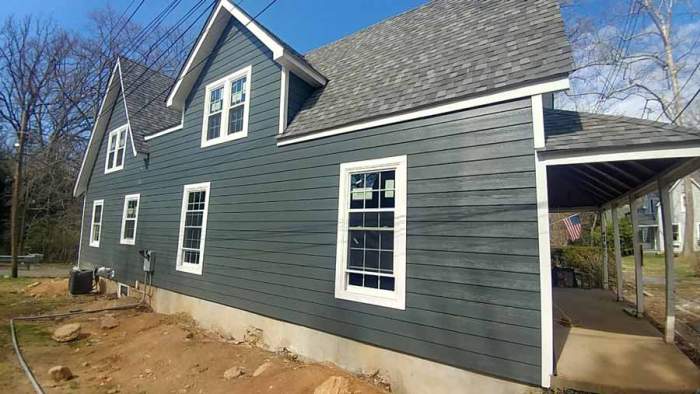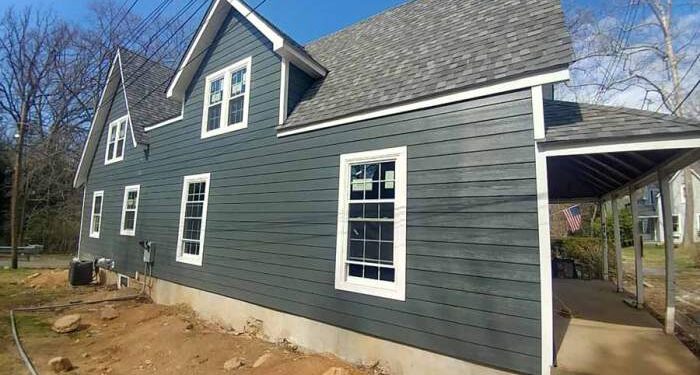When it comes to selecting the perfect siding for Asian climates, there are crucial factors to consider. From the impact of humidity on durability to the importance of insulation for energy efficiency, this guide delves into all aspects to help you make an informed decision.
Exploring popular siding materials and their suitability in hot and humid regions, as well as discussing sustainability and environmental considerations, this guide is your go-to resource for all things siding in Asian climates.
Factors to consider when choosing siding for Asian climates
When selecting siding for Asian climates, it is crucial to take into account various factors that can impact the performance and durability of the materials. Climate plays a significant role in determining the suitability of siding options, especially in hot and humid regions where extreme weather conditions are common.
Impact of climate on siding materials
- Climate influences the choice of siding materials as different materials react differently to varying weather conditions. For example, materials that are resistant to moisture and heat are more suitable for hot and humid climates.
- Extreme temperatures, high humidity, and frequent rainfall in Asian climates can cause siding materials to expand, contract, or deteriorate over time if they are not adequately suited to withstand these conditions.
Impact of humidity on siding durability
- Humidity can significantly affect the durability of siding materials, leading to issues such as mold growth, rotting, and warping. It is essential to choose siding materials that are moisture-resistant and can withstand high humidity levels to ensure longevity.
- Fiber cement, vinyl, and aluminum are popular siding options for hot and humid climates due to their resistance to moisture and minimal maintenance requirements.
Comparison of siding materials for hot and humid climates
- Fiber cement siding is a durable and low-maintenance option that offers excellent resistance to moisture, making it ideal for Asian climates with high humidity levels.
- Vinyl siding is another popular choice for hot and humid regions as it is affordable, versatile, and resistant to moisture, rot, and insects.
- Aluminum siding is lightweight, corrosion-resistant, and easy to install, making it a suitable option for areas with high humidity and coastal regions prone to salt exposure.
Importance of insulation in siding for energy efficiency
- Proper insulation is crucial when choosing siding for Asian climates to enhance energy efficiency and reduce heating and cooling costs. Insulated siding can help maintain a comfortable indoor temperature by minimizing heat transfer through walls.
- Insulated vinyl siding is a popular choice for homeowners in hot and humid climates as it provides an additional layer of thermal protection, reducing energy consumption and improving overall comfort levels.
Popular siding materials for Asian climates
When choosing siding for Asian climates, it is essential to consider popular materials that can withstand the unique weather conditions in the region. Here are some commonly used siding materials and their suitability for Asian climates:
Vinyl siding
Vinyl siding is a popular choice for Asian climates due to its durability and low maintenance requirements. It is resistant to moisture, which makes it ideal for areas with high humidity levels. Additionally, vinyl siding is available in a wide range of colors and styles, allowing homeowners to customize their exterior design.
Fiber cement siding
Fiber cement siding is another excellent option for hot and humid regions in Asia. This material is resistant to warping, rotting, and pests, making it ideal for tropical climates. Fiber cement siding is also fire-resistant, providing an added layer of protection for homes in areas prone to wildfires.
Wood siding
Wood siding can be suitable for tropical climates in Asia, but it requires regular maintenance to prevent rot and termite damage. While wood siding adds a natural and rustic look to homes, it may not be the most practical choice for regions with high humidity levels.
Proper sealing and treatment are essential to ensure the longevity of wood siding in tropical climates.
Metal siding
Metal siding options, such as aluminum or steel, can be cost-effective choices for Asian countries. Metal siding is durable, resistant to pests, and requires minimal maintenance. However, metal siding may not be the best option for areas with extreme temperature fluctuations, as it can expand and contract with heat and cold.
Proper insulation and installation techniques are crucial to maximize the benefits of metal siding in Asian climates.
Sustainability and environmental considerations

When it comes to choosing siding for Asian climates, sustainability and environmental considerations play a crucial role. Opting for eco-friendly siding materials not only benefits the environment but also contributes to the overall energy efficiency of a building.
Benefits of Eco-Friendly Siding Materials
- Reduce carbon footprint: Eco-friendly siding materials are often made from recycled or renewable sources, helping to lower carbon emissions.
- Improved indoor air quality: Sustainable siding options do not release harmful chemicals or toxins into the air, promoting a healthier living environment.
- Long-term durability: Many eco-friendly siding materials are designed to last longer, reducing the need for frequent replacements and minimizing waste.
Impact on Energy Consumption
- Insulation properties: Sustainable siding materials such as cork or recycled wood can provide better insulation, reducing the need for excessive heating or cooling in Asian climates.
- Reflective surfaces: Some eco-friendly siding options have reflective properties that can help maintain a comfortable indoor temperature without relying heavily on artificial cooling systems.
- Energy-efficient production: Choosing siding materials that are manufactured using sustainable practices can lower the overall energy consumption associated with the production process.
Recycled or Renewable Siding Materials for Asia
- Bamboo: Bamboo is a renewable resource that grows quickly and can be harvested without causing environmental harm. It is a popular siding choice in many Asian countries.
- Cork: Cork is a sustainable material that offers excellent insulation properties and is harvested without cutting down trees, making it an eco-friendly option for siding.
- Recycled plastic composite: Made from recycled plastic and wood fibers, this siding material is durable, low-maintenance, and helps reduce waste in landfills.
Maintenance of Environmentally Friendly Siding Options
- Regular cleaning: Most eco-friendly siding materials require simple cleaning with water and mild soap to maintain their appearance and longevity.
- Sealing and staining: Some sustainable siding options may need periodic sealing or staining to protect them from moisture and UV damage, extending their lifespan.
- Professional inspections: It is recommended to have a professional inspect eco-friendly siding regularly to address any issues promptly and ensure proper maintenance.
Installation and maintenance tips for siding in Asian climates
Proper installation and maintenance are crucial for the longevity of siding in Asian climates. Here are some tips to help you keep your siding in top condition:
The importance of proper installation techniques for siding longevity
- Ensure that your siding is installed by professionals who are experienced in working with the specific material and climate conditions in your area.
- Properly seal all seams and joints to prevent water infiltration, which can lead to mold growth and damage.
- Choose the right type of fasteners and make sure they are installed securely to withstand strong winds and heavy rains.
Provide tips for maintaining siding in areas prone to heavy rainfall
- Regularly clean your siding to remove dirt, debris, and mold growth that can thrive in moist conditions.
- Inspect your siding after heavy rainfall for any signs of damage or water penetration, and address any issues promptly.
- Consider applying a waterproof sealant to protect your siding from excessive moisture and prevent rotting.
Discuss the significance of regular inspections and repairs in humid climates
- Perform regular inspections of your siding to check for any signs of wear and tear, such as cracks, peeling paint, or insect damage.
- Repair any damaged areas immediately to prevent further deterioration and maintain the integrity of your siding.
- Monitor the humidity levels in your area and take preventive measures, such as improving ventilation, to reduce moisture build-up and protect your siding.
Share insights on painting or treating siding to protect against mold and pests
- Consider painting your siding with a mold-resistant paint to prevent mold growth in humid climates.
- Apply a protective coating or treatment to deter pests, such as termites or carpenter ants, from damaging your siding.
- Regularly inspect and touch up any paint or treatment to ensure continued protection against mold and pests.
Final Wrap-Up
In conclusion, choosing the right siding for Asian climates requires a careful balance of factors like material durability, climate suitability, and environmental impact. Armed with the knowledge from this guide, you can confidently navigate the world of siding options to find the perfect fit for your needs.
FAQ
What role does insulation play in siding for Asian climates?
Insulation is crucial for energy efficiency in Asian climates, helping to regulate indoor temperatures and reduce the load on cooling systems.
Are there specific maintenance requirements for wood siding in tropical climates?
Wood siding in tropical climates may require more frequent inspections and treatments to prevent moisture damage and decay.
How can eco-friendly siding materials benefit Asian climates?
Eco-friendly siding materials can help reduce energy consumption, promote sustainability, and minimize environmental impact in Asian regions.




